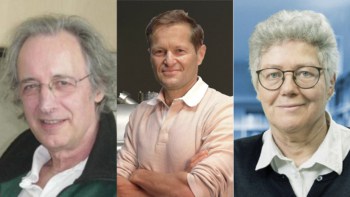
Describing different systems using the same fundamental law is an ancient idea. In the early 18th century, for example, the French mathematician Évariste Galois gave birth to group theory, which is an important part of mathematics but has also found concrete applications in physics and chemistry. In statistical physics, other mathematical tools called universality classes can describe systems with the same macroscopic characteristics, although the microscopic details of these systems can be very different. Some universality classes use just a few parameters to describe systems composed of a large number of particles in thermal equilibrium.
However, most systems in nature are not in equilibrium. In 1986, Mehran Kardar, Giorgio Parisi, and Yi-Cheng Zhang derived the Kardar-Parisi-Zhang (KPZ) equation. This breakthrough created the KPZ universality class, which describes the dynamics of a wide range of interfaces. These include crystalline surfaces, wildfire fronts, and frost on a window. These are systems that expand and shrink in a random manner and are therefore classified as out-of-equilibrium systems.
Now, Sylvain Ravets and Jacqueline Bloch at France’s Université Paris-Saclay and an international team of collaborators have done an experiment that shows that polaritonic Bose-Einstein condensates (BECs) could provide a tunable platform to study the KPZ universality class and its rich physics. They report their results in Nature.
Light and matter quasiparticle
Exciton–polaritons – often simply called polaritons – are quasiparticles arising from the coupling between photons and electron–hole pairs, which are themselves called excitons. In their experiment, the team used a laser to emit photons that are confined within a Fabry-Perot microcavity. This is composed of two distributed Bragg reflectors as shown in the figure. The photons are absorbed by semiconductor quantum wells that are embedded into the cavity, creating excitons. Then, the excitons annihilate by electron-hole recombination and create photons again. This gives rise to polaritons if the process happens numerous times before photons escape the cavity.
An important property of polaritons is that they are bosons, and therefore are not subject to the Pauli exclusion principle. Hence it is possible to create a polaritonic BEC, which is composed of a macroscopic number of quasiparticles in a single quantum state. Compared to BECs made from atomic gases, which need to be cooled to sub microkelvin temperatures, polaritonic condensates can be normally created at temperatures of a few kelvin – and sometimes at room temperature – depending on the semiconductors used. Another important difference between atomic and polaritonic BECs is that atomic BECs are in thermal equilibrium, while polaritonic BECs are out-of-equilibrium systems. Indeed, to maintain a polaritonic condensate, scientists must continuously excite the cavity with a laser to stabilize the number of photons going in and out of the system.

Syukuro Manabe, Klaus Hasselmann and Giorgio Parisi win the 2021 Nobel Prize for Physics
The KPZ equation was first used to describe the haphazard dynamics of out-of-equilibrium systems, such as the interface of expanding bacterial colonies. Indeed, it has been shown that nearly all growing interfaces fall into the KPZ universality class. Ravets, Bloch and colleagues measured the phase of their polaritonic BECs and demonstrated that it falls into the KPZ universality class. This confirms a prediction that was made in 2015. More precisely, they have shown, using optical interferometry, that the decay of the phase of a 1D polariton condensate follows the KPZ scaling law, both numerically and experimentally.
“Beyond 1D, exciton–polariton lattices offer exciting perspectives for the exploration of KPZ physics in 2D, where an experimental realization is highly sought after,” the team writes in Nature. Also, polaritonic experiments can be precisely controlled, which means that their research paves the way of a tunable polaritonic platform to study various out-of-equilibrium quantum systems belonging to the KPZ and other universality classes.



